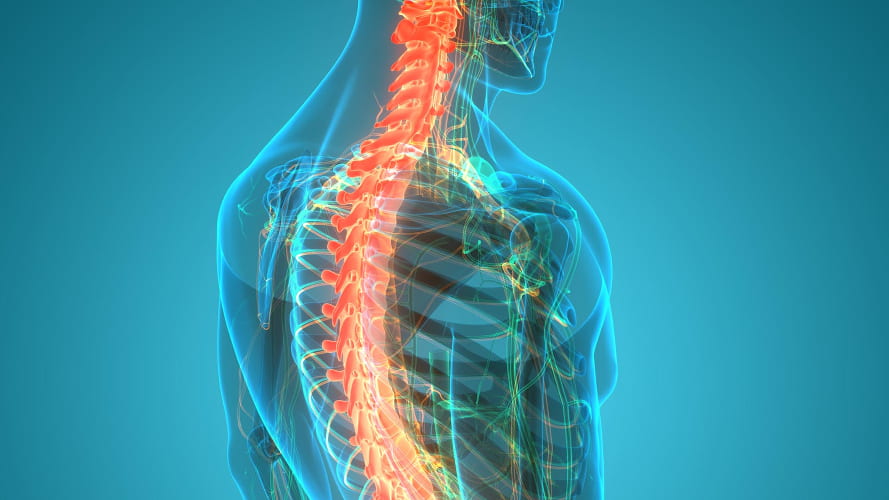A spinal cord injury is a life-altering event, and the effects, such as muscle weakness and paralysis, can dramatically disrupt a person’s life. While there is no cure for paralysis, there has been some progress in developing potential treatment options to improve symptoms. Still, much of it remains out of reach to many patients. A person with a complete spinal cord injury may benefit from a spinal cord stimulator, but cost, safety and patient willingness to undergo surgery are among the barriers to treatment.
Now, a group of engineers from Washington University St. Louis, led by Ismael Seáñez, PhD, an assistant professor of biomedical engineering at the McKelvey School of Engineering and of neurosurgery at the School of Medicine, has begun work on a low-cost, noninvasive approach to spinal cord stimulation that offers affordable hope to patients. Their work, published July 25 in the Journal of Neural Engineering, uses a low-tech electrode array that effectively stimulates muscles in the legs in people with spinal cord injuries.

One kind of stimulation, called epidural spinal cord stimulation (eSCS), implants electrodes underneath the skin near the spine and sends electrical signals to stimulate specific muscle groups. In a spinal cord injury, neuronal communication from the brain to muscles in the body may be interrupted, but the connections from the spinal cord to the muscles themselves remain intact. ESCS can get extremely close to the spine and essentially allow the weakened signals from the brain to reach their targets in the spinal cord to reactivate the muscles.
Because of how close that implant can get to the spine, “We can be very particular about what muscles we’re targeting,” Seáñez said.
ESCS has been available since the 1960s for pain management, and over the last decade has been used successfully to produce muscle movements for activities as complex and dexterous as biking, swimming and kayaking. However, the surgery required for it, the large team of experts needed to implant it, and a cost in the tens of thousands of dollars, can keep it out of reach for many.
Instead, Seáñez and his lab turned to transcutaneous SCS (tSCS). Instead of a surgical implant directly into the body, tSCS uses a series of electrodes placed on the skin to deliver electrical pulses with the aim of stimulating specific muscle groups. Researchers have studied tSCS for muscle stimulation for years, in a variety of configurations with both single electrode and multi-electrode arrays, but before this work there had been no comprehensive study evaluating how to best use tSCS for muscle stimulation.
